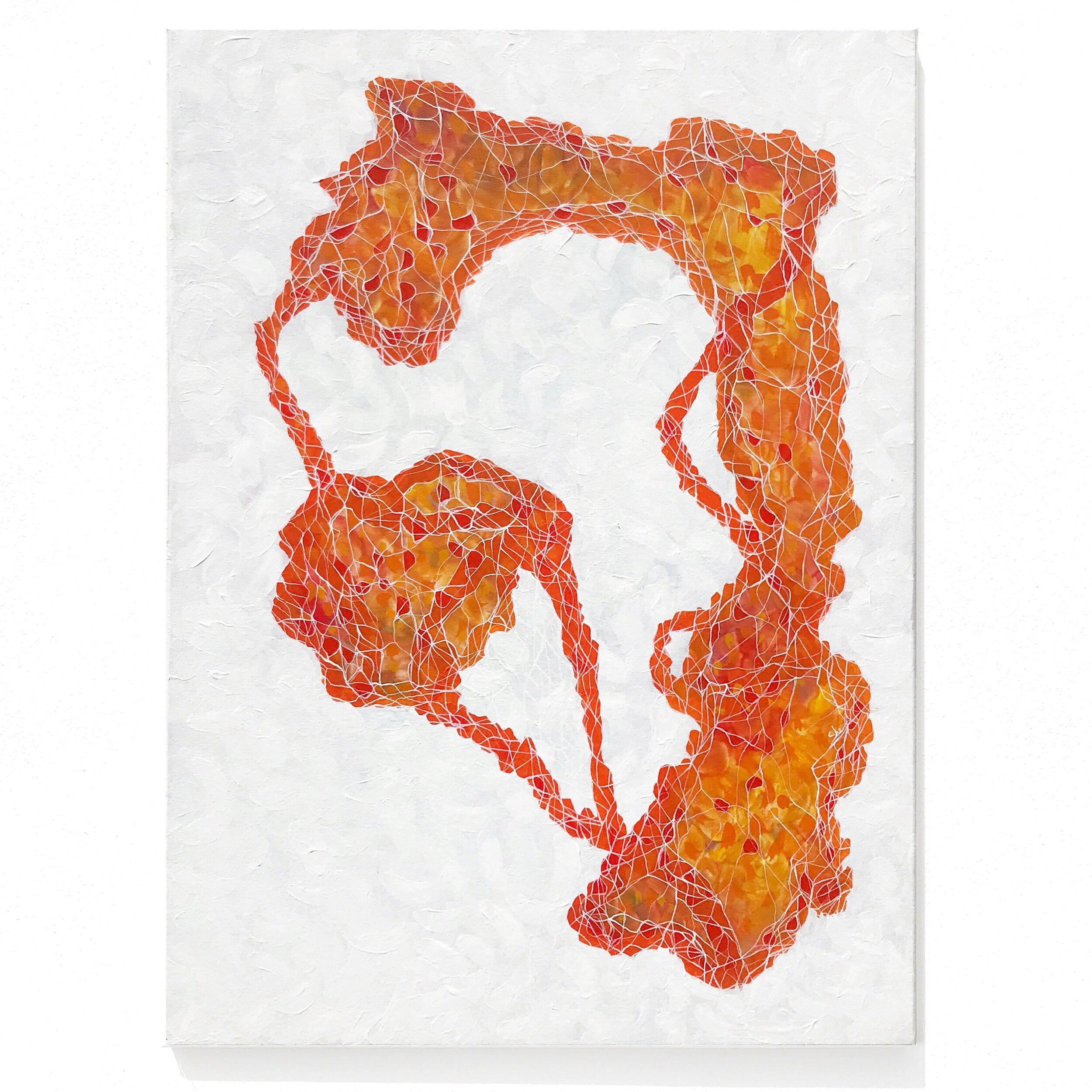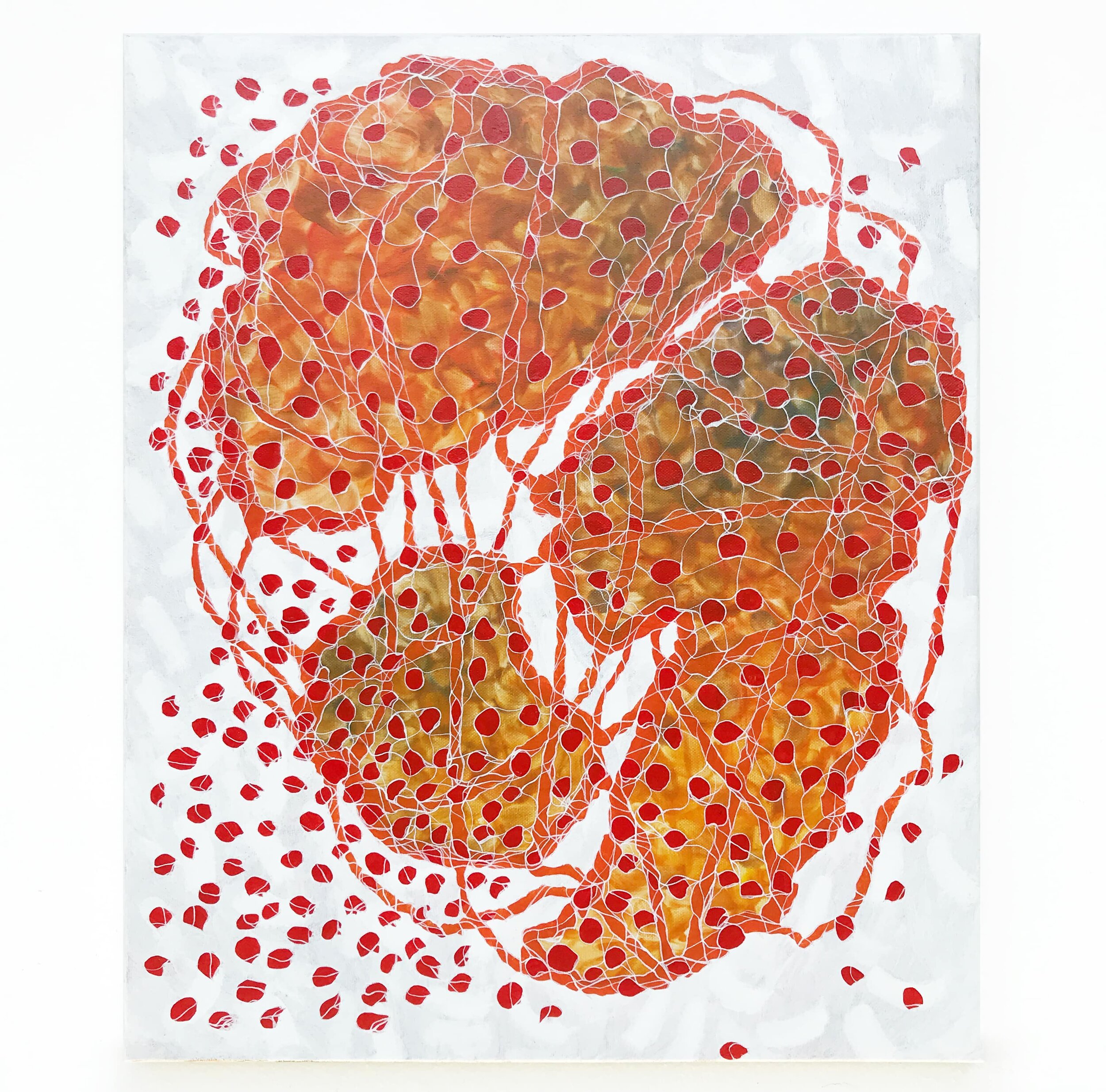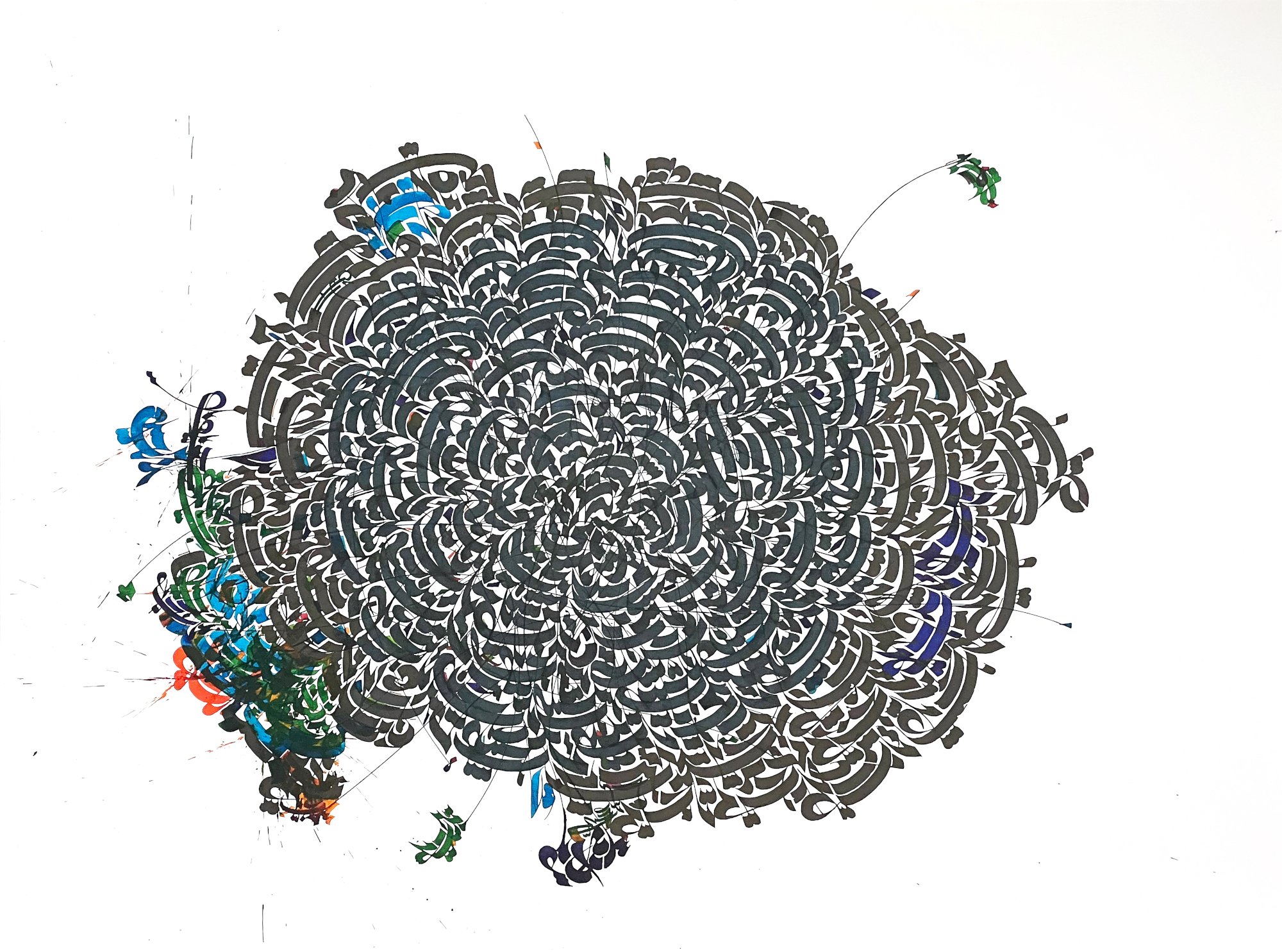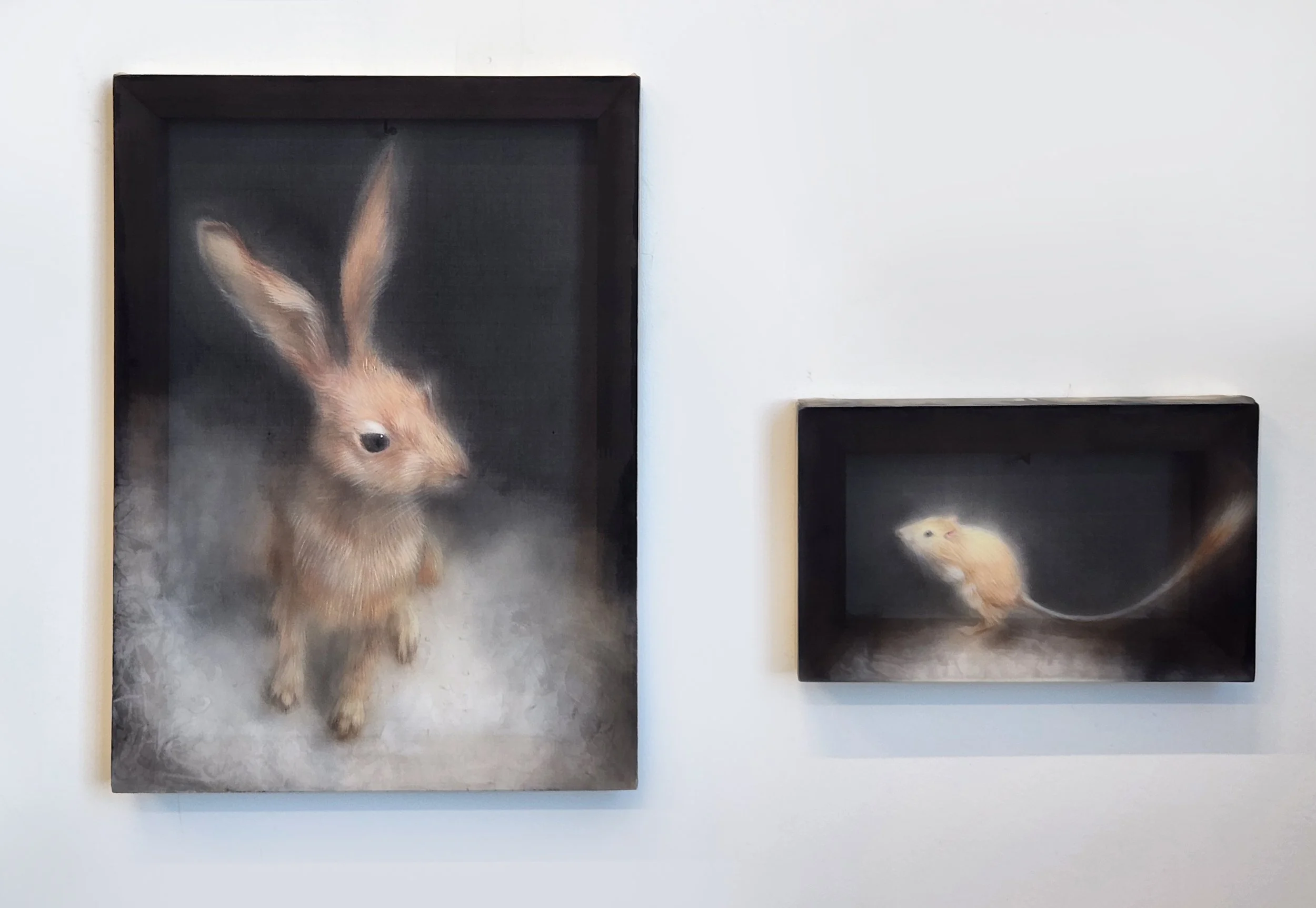10 Questions with Shee Gomes
Born in 1987 in São Paulo, Brazil, with a degree in Digital Design, Shee Gomes began her work in visual arts the same year she graduated from college. Shee has been showcasing her work in a variety of exhibitions, collaborations, and projects, with curated works featuring international books and magazines.
Shee’s portrait
ARTIST STATEMENT
Non-objective painting soon became part of the process, with expressive colors and brushstrokes that seek harmony and a certain sonority in each composition to translate her perceptions of the world. Side by side with the painting are the drawings made with different materials in contrast to the acrylic paintings, sometimes adopting figurative forms. For Shee, art transcends cultures, concepts, ideas, and time itself, connecting us with all that we are. Her purpose is to unveil the new and expand this connection.
Frequencies #499, Acrylic on canvas, 50x70 cm, 2020 © Shee Gomes
Limited edition art collectors’ book
INTERVIEW
First of all, introduce yourself to our readers. What is your history and your artistic background?
Hi, my name is Shee, short for Sheila, and I'm from Brazil. I was a very sensitive and super curious child; I think this mixture started my first creations. My mother worked at a book publishing company and used to bring home books and blank notebooks for drawing, which she assembled from papers leftover from productions. I started drawing like that, trying to create stories and characters from my imagination and restlessness. I wanted to create what didn't exist; that was my goal. After I graduated in Digital Design at college, I started looking for more and more ways to express myself, and the visual arts made more and more sense to me. I started studying drawing, I wanted to understand and master the technical part, but I ended up learning a lot more. Finally, I learned to let go as an artist and discover a new universe of possibilities to express what I wanted. Since then, I started to explore, study and dedicate myself to this work daily.
What is your personal aim as an artist?
My goal is to keep improving and growing my work to the point where it can speak louder and louder. The first time I understood how much art matters, I was flipping through an art magazine, at a time in my life when I was quite confused about what I wanted to do, what made me feel good. I remember reading artist interviews at a time when I didn't even know what art was. And in one of those magazines, I saw a whole world in a drawing. It was a double-page art with lots of colors and a surreal style. I just know it made sense to me at the time. I spent a long time looking at that art; it talked to me, without saying anything, it said so much. And I wondered how an image could say so much. I think it was when I really saw how important art was to me. And I started to accept that this was a language that I knew and could easily identify with; why not explore more? So my goal became this, to speak in this way as intensely and as loud as I can.
Synapses #514, Acrylic on canvas, 50x60 cm, 2020 © Shee Gomes
Synapses #506, Acrylic on canvas, 50x70 cm, 2020 © Shee Gomes
Synapses #516, Acrylic on canvas, 50x60 cm, 2020 © Shee Gomes
In your opinion, what role does the artist have in society?
Art teaches us to be what we really are. Aldous Huxley said at some point: "...We live together, we act on each other, and we react to each other; but always, and in all circumstances, we are alone..." I think art is this thing that connects us and shows us that even with all the particularities that we carry, we have something in common, that something is what we are. Art takes care of showing us and reminding us of this, of making this connection with our most ancestral self. And that somehow drives us as individuals in a society. Art teaches us, reveals us, and unites us. And in a contemporary society where we are bombarded every minute with information and incessantly encouraged towards excessive consumerism, which puts us on the autopilot of our own lives, art is perhaps the breath we need to be able to move forward and maintain our freedom.
What do you hope that the public takes away from this work?
Everything and nothing. Either way, you will only see what you have to see. It's a dialogue that will sometimes resonate with something and sometimes not. But you can always return to the work until he talks to you and makes you vibrate in some tone. I hope you can communicate with him in some way. And if you can't, keep looking in other artists and other works for that communication that speaks more clearly to you. There's always something to hear.
Frequencies #503, Acrylic on canvas, 50x60 cm, 2020 © Shee Gomes
You seem to have recurring patterns and colors in your work. Do they have a specific meaning for you?
Not really. Repetition is common when we are exploring and practicing something. I think this is the natural tendency of things. Repeat to understand and evolve. Perhaps these repetitions are a comfortable base that encourages me to gradually explore other technical possibilities. Maybe it's just an aesthetic phase that makes sense right now.
Let's talk about your creative process. Where do you draw inspiration from and how do you transfer it into your work?
I'm mostly inspired by art. I read a lot, listen to a lot of music and watch a lot of movies. It's almost impossible not to be inspired. Along with that, I have an immense curiosity about existence. I like to follow scientific studies on neuroscience and how our brain works, I like to read about this topic, and I end up taking inspiration from there. I'm interested in the mechanism of art, how it's built, where it comes from, what it's capable of. So science, people, and art inspire me. I transfer all this inspiration little by little. I mature these absorptions. Some make more sense than others, some are more urgent than others, and when I'm working, they take shape. I think I transfer those inspirations after I mix them with my own reality; it's always a mix. As if I needed to tell myself what I understood first, with a composition, in the way I know how to express it better.
Voids #474, Marker on paper, 20x29,5 cm, 2019 © Shee Gomes
Voids #482, Marker on paper, 20x29,5 cm, 2020 © Shee Gomes
Do you like to experiment with new techniques, mediums, and materials, or do you tend to gravitate towards the same ones?
Totally. The techniques choose me and not the other way around. It may sound cliché, but that's how it works for me. Of course, I have my preferences, and I think it goes into that repetition and comfort thing I said before. But there are times when technique comes first, and I have to adapt to it, understand it and let it guide me through the work. There are materials I have to use because only they will materialize what I need at the moment. A piece of charcoal will bring a completely different creation compared to a college or watercolor. Each material will bring its own language, and I try to respect that.
Do you miss in person exhibitions or do you find new stimulus and motivation from the shift to digital exhibitions? How did you adapt your work to the online presentations over the last year?
For sure. As much as art is a solitary work, there is this part, the exhibition, where the artist continues the work. Outside the canvas and paper, this is where the dialogue with other people begins, and in the physical exhibition the artist can actually see this dialogue happen. For me, it's a very important part of the job, like "release the beast". Not to mention that seeing the physical work, the details, size, and real colors makes a difference compared to the virtual. But the pandemic brought that part of the online and immediate interaction with work, which is very interesting. The dialogue is different because the spectator is often silent in a physical exhibition, just absorbing. On the internet, on the other hand, he sometimes also transmits what he felt. This exchange is so precious. And on the internet, the viewer is most of the time alone. He has his space and time to digest without interference. This can change his perception and involvement with the work. It becomes more intimate, more personal. I think this is beautiful. It's like reading a book. You have the time to create your own unique conceptual image of that work. I always tried to be careful to present my work as integral as possible and to as many people as possible, so online was already an important part of my reality. Perhaps what has changed is the frequency of showing the works. With the pandemic, I felt even more the need to consume and share art. Then the frequency became bigger and more consistent.
Frequencies #493, Acrylic on canvas, 40x50 cm, 2020 © Shee Gomes
Do you have any upcoming shows or collaborations you are looking forward to?
Yes, this year I'm participating in a group exhibition at a gallery in the Tower Bridge area, in central London. Unfortunately, due to the pandemic, I will have to accompany it from a distance, but I invite anyone who is there for a visit.
Finally, what are your plans for 2021 and for the future in general?
To survive (what a year, huh!). I don't think anyone imagined this 2021 as it came. It's impossible not to have been affected in some way by this pandemic. My plans froze for a long time, and, like many people, I simply moved on so that I didn't stop completely. With some hope of containing this devastating scenario, now the plan is to move on, breathe and have some fun. That's the plan, but we always go a little out of the script, right?


























